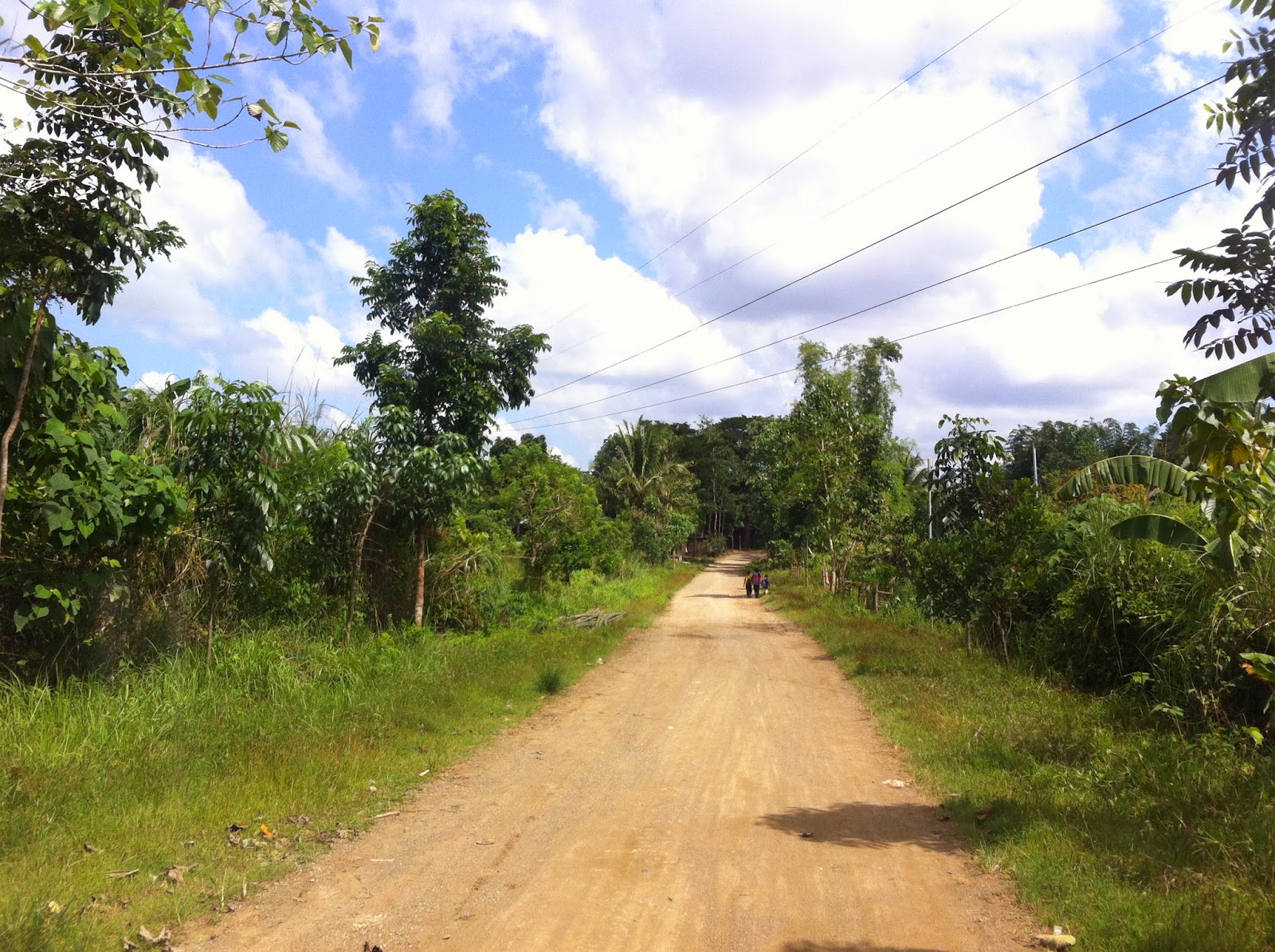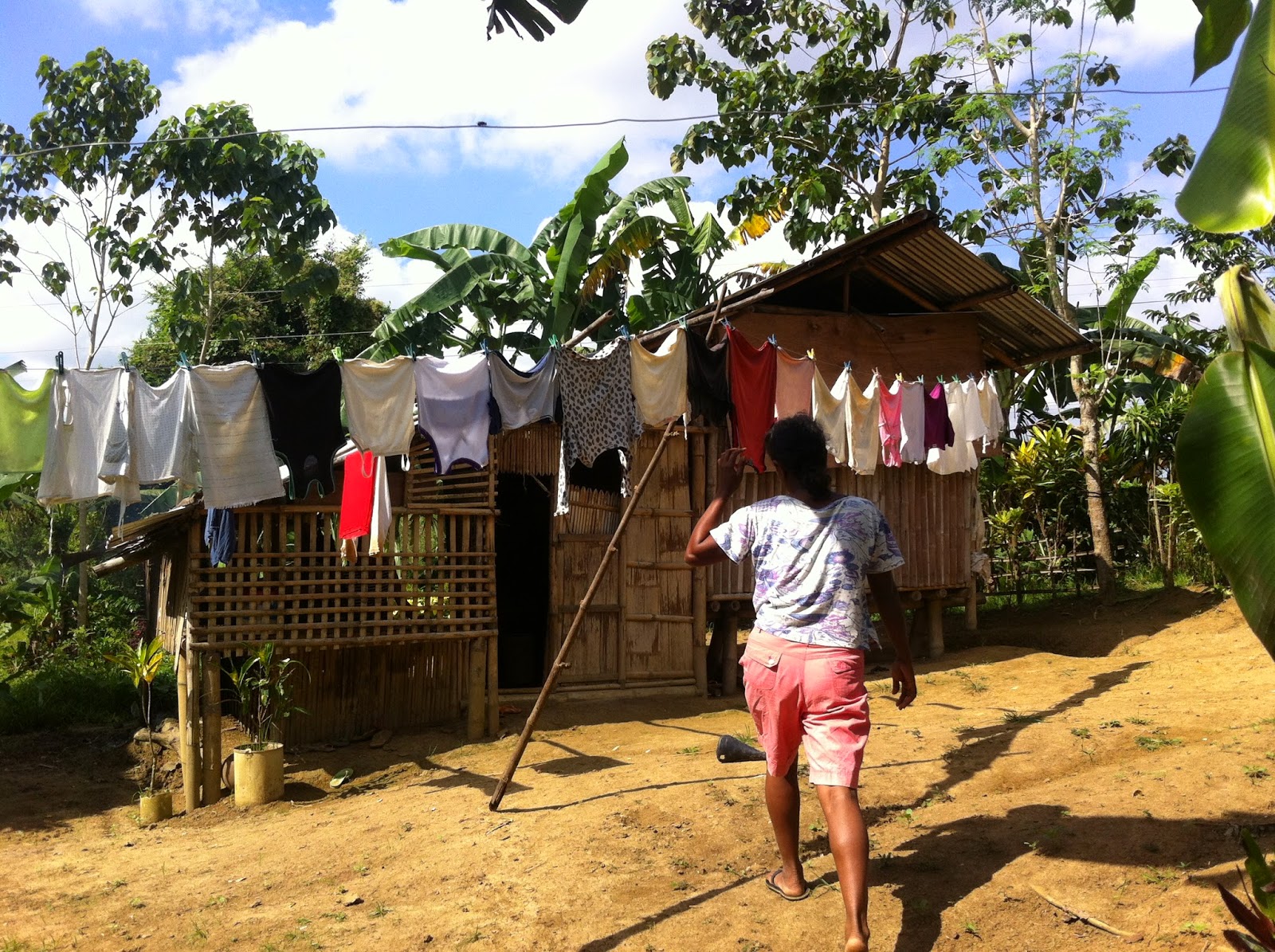Some of the Atis I "worked" with.
Here are some reasons why, four months ago, I chose "Traditional Medicine" with a community rotation as my clerkship elective:
1. It sounded lighter. Unlike some of my classmates, I do not see an elective that includes 24-hour duties as a particularly appetizing adventure.
2. I'd been told that last year, the student who took the same elective tagged along with the all-powerful elective coordinator (who's also a former DOH secretary) to a conference in Brunei.
3. "Community" is code for "place of your choice." Regular electives don't really give you that option; you more or less have to do it in PGH, unlike the summer elective and its limitless, borderless possibilities.
4. There was that faint glimmer on the horizon that told me I could somehow tweak the details and do my elective in Iloilo.
The main roads of Pototan, Iloilo are lined with mahogany trees painted white round the bases.
Now here are some "reasons" that have absolutely nothing to do with that choice:
1. To have a "chill" time. That's lazy, mind you.
2. To be able to go home for the Christmas break earlier than most everybody else.
3. To go to Baguio with my blockmates on the first official week of my elective.
The Atis of Barangay Ubang.
And here's a quick rundown of the details of my elective:
1. Interviewing Ati healers in a municipality in Iloilo. (Yes, the stars somehow aligned and made it possible for me to do my elective in my hometown. Or as kids would say these days, 'chos.)
2. Writing a paper about it. (Which, some people have told me, I'm rather skilled at.)
Yeah, rice paddy goodness.
Finally, here's what has actually happened:
1. Two-day field work in the town of Pototan, around 30km north of Iloilo City.
2. A fifteen-minute ride via the rural health unit's ambulance to Barangay Ubang, where an official settlement of some 50 Atis can be found.
3. Interviewing the one and only healer of the Atis of Ubang. She's a forty-something farmer who's an all-in-one package: midwife, "taga-luy-a," etc.
4. Said interview took place under the shade of a tree just off a rice paddy that we had to traverse (I'm quite good at doing this walk-dance-ballet across woods and nature-y stuff, mind you, thanks to my high school adventures with the school paper).
5. The above happened because the Ati that we told the day before to inform Manang Healer of the interview did not do as instructed.
6. Helping Manong Joey and Manang Barbara, the nurses who served as my official companions, administer flu vaccines to some Atis while we were figuring out how to get to Manang Healer.
7. Free lunch and use of laptop and internet, courtesy of the office of Dr. Mondragon, municipal health officer of Pototan, who also drove me to and from the city for those two days. If you get to read this, thank you a million times over!
8. Zero progress on the paper. Merry Christmas!
* * * * *
The road to Pototan.
Pototan rural health unit.
Across the rural health unit, goats.
Furniture for sale at the RHU.
The lobby also has some medical stuff.
The entrance to Barangay Ubang.
Dirt road to the barangay.
Aftermath of the sugarcane harvest.
Traveling in style with Manong Cleo.
Entrance to the Ati settlement.
Outside an Ati's house.
Drying the harvest.
Vaccination.
Snacks for the kids.
The communal "toilet."
Into the rice field! Enlarge the photo to see the white dots in the distance - the Ati farmers, one of whom was the healer I had to interview.
Leaving.
Reflections.
My team: (Seated) Dr. Mondragon; (Standing, L-R) Nong Joey and Nang Barbara.























No comments:
Post a Comment